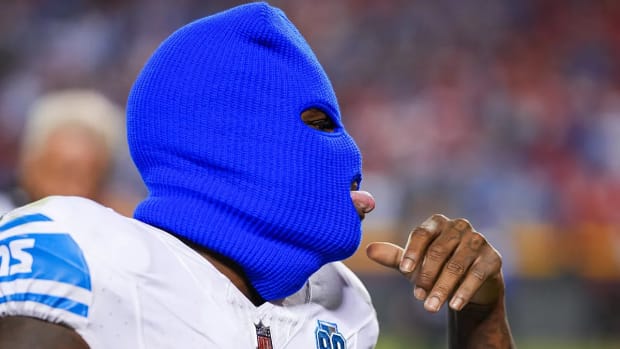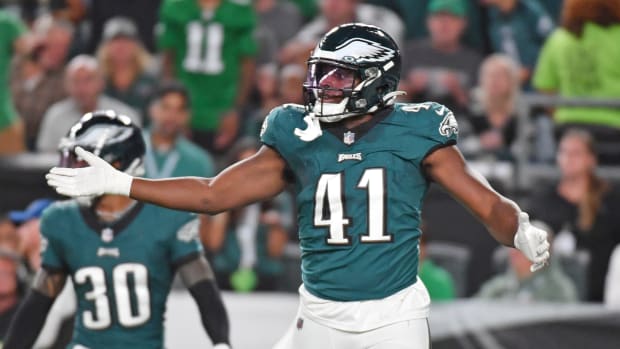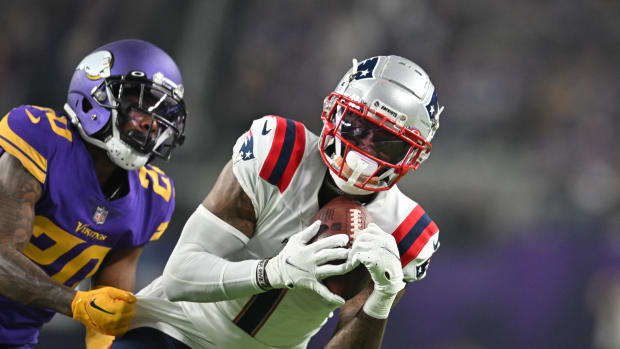Not Much Separates the Top Three Eagles to Wear No. 30
One month. That’s all that remains of the Eagles’ offseason.
Thirty days. That’s all that remains until the Eagles are scheduled to open the regular season against the Washington Football Team on Sept. 13 in Landover, Md.
As far as the Eagles’ jersey countdown to kickoff, well, that means the No. 30 heads into the examination room.
There wasn’t much that separated the three players who earned a spot in the top three in team history to wear that number.
Hanging a dartboard, putting on a blindfold, and chucking a couple of darts was tempting. As it was, there was one thing that jumped out when deciding upon the player who should occupy the top spot.
Here goes:
Current number 30:
Corey Clement. One season of greatness does not earn the running back a spot in the top three rankings. Close, but not quite. Another year like he had in 2017 would probably do it, though.
That was the year in which Clement arrived as an undrafted free agent from Wisconsin and played himself into a large role on offense after Darren Sproles got hurt. Clement ended with 444 yards from scrimmage with six touchdowns, then in the Super Bowl had 100 yards receiving and a touchdown.
Since then, injuries have gotten the better of him. He was brought back this season and, by all accounts from players and assistant coaches, has looked like the Clement of 2017. So far.
Top 3 to wear number 30:
3. Charlie Garner. The running back, drafted in the second round by the Eagles in 1994 out of Tennessee, spent five seasons in Philadelphia. His career got off to a terrific start, rushing for more than 100 yards in his first two games as a pro. He had just three more 100-plus rushing efforts over the remainder of his time with the Eagles.
Garner had 2,261 yards in Philly, with 17 touchdowns. He went on to play six more years in the league with three different teams.
In 2017, doctors told Garner they believe he has Chronic Traumatic Encephalopathy, otherwise known as CTE brought on by repetitive blows to the head.
"I don't have all my faculties anymore," said Garner. "I can't remember things. When I go to the mall or grocery store, I have to take one of my kids with me to remember where the car is parked. I have trouble remembering conversations I had five minutes ago. Bright lights bother me. I just don't feel right all the time.”
2. Brian Mitchell. You could make the case that he could be No. 1, and it was certainly heavily considered. Mitchell is second on the NFL’s all-time list in all-purpose yards with 23,300 behind only Jerry Rice. His 13 special team touchdowns are second in NFL history behind Devin Hester, who had 14, and his nine punt returns are third behind Eric Metcalf’s 10 and Hester’s 14.
Much of Mitchell’s damage came during the first 10 years of his career spent in Washington. He came to Philadelphia at the age of 32 in 2000 and returned two punts for TDs and another two touchdowns on kickoff returns during three seasons with the Eagles before ending his career with one year for the New York Giants.
1. Joe Lavender. What separated Lavender from the pack?
First, he began his career with the Eagles as a 12th round pick in 1973 before going to Washington after three seasons, the reverse of Mitchell. More importantly was Lavender’s impact early on with the Eagles.
On Sept. 23, 1974, he scooped up a fumble against the visiting Dallas Cowboys on Monday Night Football and went 96 yards for a touchdown, the longest such play in MNF history and the difference-maker in a 13-10 win by Philly that night.
Six days later, Lavender intercepted a pass from Baltimore Colts QB Bert Jones and returned it 37 yards for a touchdown.
He had four picks in 39 starts with Philadelphia. In Washington, he had eight interceptions in 1976, his first season there, and was named to the Pro Bowl twice, in 1979 and 1980, after intercepting six passes each season.
He ended with 33 interceptions in a 10-year career that probably would have lasted longer if not for injuries taking their toll.
Lavender’s final game was as a backup in 1982, when Washington won Super Bowl XVII.
Runner-up:
Corey Clement. See above.
Others: Art Koeninger, Chuck Brodnicki, Barnes Milon, Claude Urevig, Harry Benson, Bob Masters, Don Looney, Mort Landsberg, John Binotto, Richard Erdlitz, Milton Smith, Bosh Pritchard, Theron Sapp, Alvin Haymond, Jim Raye, Ron Lou, Mike Hogan, Cleveland Franklin, Don Calhoun, Chris Johnson, Otis Smith, J.R. Reed, Geoff Pope, Colt Anderson, and Ed Reynolds.
Get the latest Eagles news by joining the community. Click "Follow" at the top right of EagleMaven page. Mobile users click the notification bell. And please follow me on Twitter @kracze.




